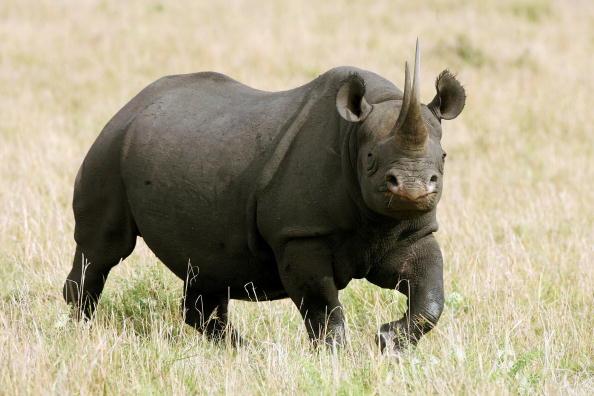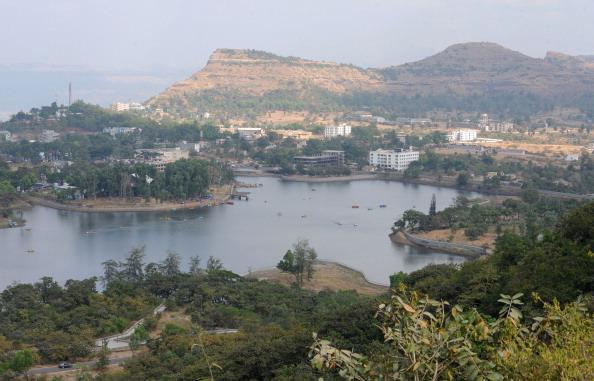Herbivores or plant eating animals are found on every continent of the earth other than Antarctica. Among these, the number of known land herbivore species is approximately 4000. But a recent study of large herbivores led by Professor William Ripple of the Oregon State University has brought into light some very worrying results. The study reports that 60 percent of the giant herbivores of the world are in risk of extinction and the decline may eventually lead to desertification of the entire planet!
The study conducted by an international research team was done on 74 species of the world’s largest herbivores weighing over 100 kilograms (220 pounds). It included tapirs, zebras and rhinoceros and analyzed the key threats, ecological reasons for the decline in populations and the endangerment status of these species.
The team found, 25 of the studied 74 species now occupied only 19 percent of their historical range. Further it was discovered that 60 percent of the giant herbivore population was in grave danger of extinction. And as per the scientists, this unprecedented population decline of the larger land herbivores may very well serve as the prelude to desertification or the conversion of the entire planet into a barren landscape.
Some of the important threats to the population of the larger herbivores as discussed in the study are,
Increase in livestock production
Land that should have been earmarked for wildlife is often being used for livestock production, a practice that has tripled since 1980 in the developing countries. The ruminant population is estimated to be around 3.6 billion on the earth today and around 25 million are added every year. This increase in livestock population has led to shortage in food and water for the larger herbivores and increased chances of animal disease transmissions.
Habitat loss
Cultivation, land fragmentation and deforestation have led to habitat loss and consequently to the population decline of these creatures. If the current rate of deforestation continues, around 75 percent of the forest cover and almost half the biodiversity of Southeast Asia could be wiped out by the end of this century. Moreover larger herbivores require a larger area and the land fragmentation makes them easy targets for conservation challenges that small populations are prone to.
Hunting of large herbivores for various reasons
Hunting of the large herbivores for exotic meat consumption and the illegal wildlife trade in skin, horns and other body parts is also a notable threat for these species. Africa’s western black rhinoceros became extinct in 2011 owing to the rhinoceros horn prices rising higher than even diamonds, precious metals and cocaine in illegal markets.
The large herbivores are also prone to overhunting because of their slow reproduction. The ones that are the largest and have the slowest reproduction are most vulnerable and disappear first and that makes the hunters go for the smaller ones in size.
No Herbivores, No Ecosystem
Scientists deem that if large herbivores disappear from the earth, the ripple effects would be extremely significant and have a huge effect not only on ecosystems but also on humans.
The diminishing numbers of the larger herbivores would directly result in loss of natural prey for the large carnivores such as the lions and tigers. There would also be an indirect effect on the soil properties and the nutrient cycles from vegetation to soil.
Larger herbivores are important agents of seed dispersal over longer distances. This role in the ecosystem would be severely impacted if their population was to vanish.
Herbivores like elephants clear the vegetation by stamping, which forms a habitat for other smaller creatures. If they were to become extinct, this would result in habitat loss for other creatures. The new habitat created by cleared vegetations also forms natural fire breaks without which the intensity and frequency of forest fires may increase.
Ripple said, “We hope this report increases appreciation for the importance of large herbivores in these ecosystems. And we hope that policy makers take action to conserve these species,” He further added, “Some endangered species, such as wild pigs in Southeast Asia, capture too little attention. To face this challenge, a coordinated international campaign is needed to make wildlife protection a top priority for the entire planet.”
The study called “Collapse of the Largest Herbivores, was published in the Science Advances, the open access online journal Science magazine.
This article was written by Shilpi Gemawat, a contributing writer for indiasendangered.com. This article has been republished with permission, original article here.




